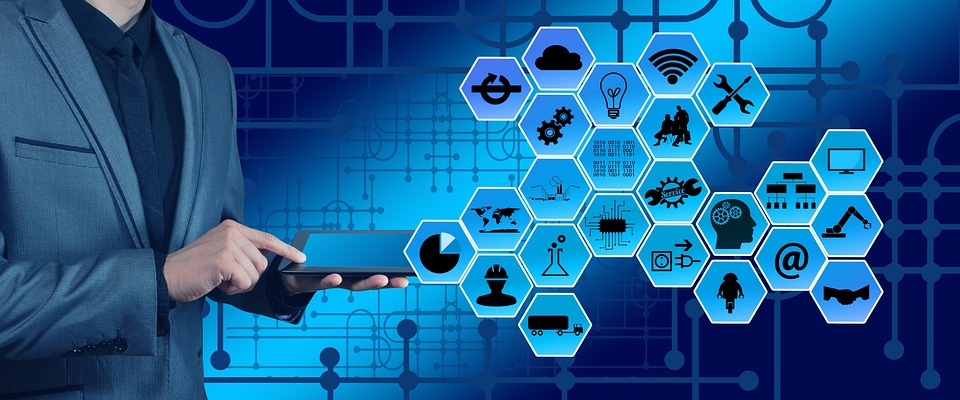Many industries are automating their processes. All industrialists, engineers, scientists and researchers have to be aware of latest trends in industries, so we can make applications based on the latest trends.
List of top 5 trends
- Autonomous Mobile Robots in Logistics
- Industrial Wireless
- Robot Machines
- 3D Printing
- Digital Twin
Autonomous Mobile Robots in Logistics
Autonomous Mobile Robot (AMR) is the latest technique to manage ecommerce. It is packed with sensors and powerful on-board computers that help it to understand its operating environment. Nowadays people are purchasing a lot of things online from companies like amazon, walmart , flipkart etc. Therefore, it is very important to manage everything to deliver everything timely. Every ecommerce company has to ensure consumers to get their product on time, so they’re required to hire enough people as well. It becomes hardly possible to manage the growing demands, so here AMR comes in the picture to automate all the process. AMR also keeps managing supply chain during the manufacturing process, so there is no shortage of products.
Companies in every industry are also looking over for AMR technology, and how it can help them. AMR safely performs its task in any environment, and it can be futuristic like following demands during manufacturing or it has to manage demands form online customers.

Industrial Wireless
Industrial wireless is simply connected devices and machines in industries through wireless. Machines can communicate with each other (M2M). Let’s say, you have to upload data from one machine to other machine, then you will note data from one machine and feed it to another machine manually. However, if both machines are connected with each other, they can communicate and feed data automatically. Industrial wireless is highly secured so nobody can decode it. Nowadays lots of industries are using industrial wireless to automate their manufacturing processes.
There are more applications of Industrial wireless to control things remotely. For instance, modern automobile companies install sensors in new vehicles. Industries collect data remotely and investigate patterns in it, so they can provide better vehicles and better services.

Robot Machines
Nowadays in industries, in order to automate manufacturing they use robots. A simple example, like taking things from one place and put it in a different place. Instead of doing these things manually repeatedly, a robot performs these numerous and monotonous tasks without getting tired.
Other applications of robots are welding, assembly, designing components, printing circuit boards, packaging things, counting, labelling products etc. All these things robots do with high precessions.

3D Printing
3D printing plays a key role in industries. The good thing to use 3D printing is that it uses a single machine to design a complete model. You do not have to design different parts of a single device separately. It plays a key role in designing a prototype model as well, before designing an original product.
It manages high accuracy while it prints a 3D model. You need to feed your model to a software and the software connects the hardware to print it. A 3D printer originally works by ejecting molten material through a narrow nozzle, which moves around precisely under the software control. It prints a whole model. First, it prints the first layer. When it dries then it starts printing the next layer. 3D printing plays a vital role in the manufacturing future.

Digital Twin
A digital twin is an up-to-date virtual representation of an actual physical plant. That’s why it is called a digital twin. We can deploy sensors in an actual plant and the data from these sensors can be sent to the virtual plant through IoT to predict the future of the actual plant.
You can create predictive models using deep learning or machine learning. Using digital twins you can optimise your production, parameters, behaviour of plants. And the most important, you can predict the remaining useful life of your plant or a system. You can create a predictive maintenance model as well.
According McKinsey Study 2015, IoT will be an 11.1 Trillion Dollar Market by 2025.

Industry 4.0
Industry 4.0 is a subset of the fourth industrial revolution that concerns industry.
Industry 4.0 can be defined as full automation and connectivity between manufacturing of products, production, retails, selling, clients, including cyber-physical systems, the Internet of things, cloud computing etc.
Industry 4.0 is also called smart factory. Industry 4.0 includes everything which we discussed above. For more information about IoT click here.

This is super informative! I’m happy I found your post as it’s an improvement on similar posts I’ve seen from everyone else on this subject.
This excellent website certainly has all the info I wanted about this subject and didn’t know who to ask.
I’m amazed, I have to admit. Rarely do I come across a blog that’s both educative and engaging, and without a doubt, you’ve hit the nail on the head. The problem is an issue that too few folks are speaking intelligently about. Now i’m very happy that I came across this during my search for something concerning this.
Thanks for every other informative website. Where else may just I get that
type of info written in such a perfect means? I have a mission that I am just now
operating on, and I’ve been at the glance out for such info.